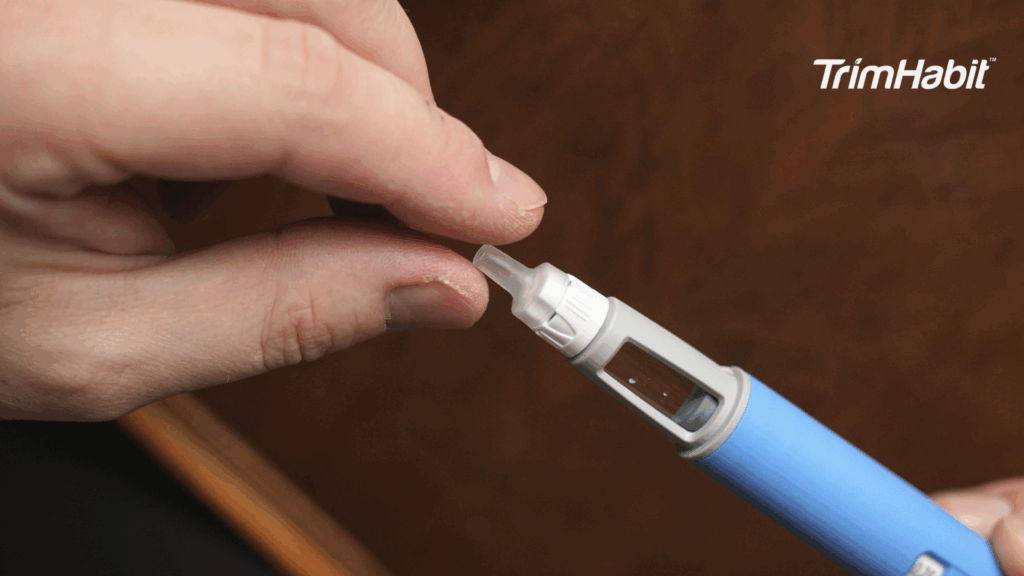Intermittent fasting offers many benefits, such as improved metabolic health and possible weight loss. However, a primary concern is the potential for muscle loss during fasting periods.
Knowing how to keep your muscles strong during intermittent fasting is key to getting the most out of fasting for your health while keeping your muscles healthy.
Maintaining muscle mass is vital for several reasons, including supporting metabolism, enhancing physical strength, and promoting overall health and longevity1,2.
Your muscle tissue helps regulate blood sugar levels, supports joint health, and contributes to better mental well-being3,4,5.
Research indicates you can preserve muscle mass while practicing intermittent fasting with the right strategies6.
Let’s explore various strategies for maintaining muscle mass during intermittent fasting.
Understanding Muscle Physiology
To effectively maintain muscle mass during intermittent fasting, it’s essential to understand how muscles grow and are maintained.
Muscle growth, or hypertrophy, primarily occurs through protein synthesis, which produces new muscle proteins and increases muscle mass7.
Conversely, muscle breakdown, or proteolysis, involves the degradation of muscle proteins, which can occur due to insufficient nutrition, physical inactivity, or hormonal imbalances8.
The balance between protein synthesis and breakdown determines whether muscle mass is gained, maintained, or lost.
What Is Muscular Hypertrophy?
Muscular hypertrophy can be categorized into two types:
- Myofibrillar Hypertrophy: Involves the growth of the muscle fibers responsible for contraction7.
- Sarcoplasmic Hypertrophy: This entails an increase in the volume of the sarcoplasm, the fluid component of the muscle cell, which stores glycogen9.
Your focus on either type should align with your fitness objectives. Myofibrillar hypertrophy is ideal if you aim to enhance strength and speed, as it builds the structural elements of the muscle10.
Conversely, sarcoplasmic hypertrophy boosts the muscle’s energy reserves, providing more sustained energy for endurance activities11.
A study showed that most muscle size increases came from sarcoplasmic hypertrophy. This means the muscles got bigger mainly because they stored more energy and fluid rather than because the muscle fibers grew stronger.
This type of growth is more about giving muscles more endurance (lasting longer during activities) rather than making them stronger or faster12.
Impact Of Fasting On Muscle Physiology
Hormonal Changes
Intermittent fasting induces several hormonal changes that can affect muscle physiology. One of the essential hormones involved is insulin, which plays a crucial role in muscle protein synthesis by facilitating the uptake of amino acids into muscle cells3.
During fasting periods, insulin levels drop, which may harm muscle maintenance. However, fasting also increases growth hormone secretion (GH), which has muscle-preserving effects. GH stimulates protein synthesis and mobilizes fat stores for energy, sparing muscle protein13.
Additionally, fasting can elevate levels of norepinephrine, which helps maintain energy levels and supports fat metabolism without significantly affecting muscle mass14.
Metabolic Adaptations
During intermittent fasting, your body undergoes several metabolic adaptations to ensure energy supply and muscle preservation.
One significant adaptation is the increased reliance on fat energy stores, reducing the need to break down muscle protein for glucose15.
This shift helps preserve muscle mass, especially with regular physical activity.
Furthermore, fasting enhances mitochondrial efficiency and increases autophagy, a cellular process that removes damaged proteins and organelles, promoting overall muscle health and function16.
Key Strategies For Maintaining Muscle Mass During Intermittent Fasting
Following the guidelines below, you can effectively maintain and even build muscle mass while practicing intermittent fasting.
1. Adequate protein intake.
Protein is essential for muscle protein synthesis and building new muscle tissue. To maintain muscle mass during intermittent fasting, you must consume enough protein. Aim for 1.6 to 2.2 grams of protein per kilogram of body weight daily17. High-quality protein sources include:
- Lean meats (chicken, turkey, beef)
- Fish and seafood
- Eggs and dairy products
- Plant-based proteins (beans, lentils, tofu, tempeh)
Consuming protein evenly throughout the feeding window helps maximize muscle protein synthesis and minimize muscle protein breakdown18.
2. Resistance training.
Resistance training is crucial for preserving and gaining muscle mass during intermittent fasting. Weight training exercises, such as squats, deadlifts, bench presses, and rows, provide sufficient exercise stimulus for muscle growth and maintenance19.
Aim for at least three weekly sessions, focusing on compound and isolation exercises.
3. Timing your workouts.
The timing of your workouts can impact muscle preservation. Training during your eating window allows you to consume protein and carbohydrates post-workout, supporting lean mass recovery and growth.
If you prefer to train in a fasted state, ensure you consume a protein-rich meal shortly after your workout to stimulate muscle protein synthesis20.
4. Sufficient calorie intake.
While intermittent fasting often involves eating fewer calories, it’s important to avoid excessive calorie restriction, as this can lead to muscle loss.
Ensure you consume enough calories to support muscle maintenance and overall health21. Calculate your total daily energy expenditure (TDEE) and aim to consume at least this amount on non-fasting days.
5. Leverage the feeding window.
The feeding window in intermittent fasting allows one to consume adequate nutrients for muscle maintenance. Plan your meals to include:
- Pre-workout meal: A balanced meal with protein and carbohydrates.
- Post-workout meal: High in protein and carbohydrates to support muscle recovery.
- Evening meal: Protein-rich to sustain muscle protein synthesis overnight.
Distributing protein intake evenly across these meals maximizes the benefits of the feeding window.
6. Utilize Branched-Chain Amino Acids (BCAAs).
BCAAs, particularly leucine, play a critical role in muscle protein synthesis.
Supplementing with BCAAs during fasting periods can help preserve muscle mass by providing amino acids to prevent muscle protein breakdown22.
Consuming BCAAs before or during workouts can be particularly beneficial.
7. Stay hydrated.
Staying hydrated is crucial for maintaining overall health and optimal muscle function. Muscles are approximately 75% water; this high water content is necessary for their proper function23.
Adequate hydration helps maintain the balance of electrolytes, is critical for muscle contractions, and prevents cramps. When dehydrated, the electrolyte imbalance can lead to muscle fatigue and decreased performance24.
Hydration also plays a significant role in the recovery process post-exercise. Water helps flush out toxins and waste products produced during exercise, such as lactic acid, which can build up in the muscles and cause soreness25.
Additionally, staying hydrated ensures nutrients reach your muscles efficiently, supporting repair and growth.
8. Focus on overall body composition.
Instead of solely concentrating on weight loss, it’s important to focus on improving your overall body composition, which involves reducing body fat while maintaining or increasing lean muscle mass.
This approach leads to better health outcomes and a more aesthetically pleasing physique.
By prioritizing body composition over mere weight loss, you lose fat rather than muscle, which is crucial for maintaining a healthy metabolism and physical strength.
Lean muscle mass boosts metabolic rate, allowing you to burn more calories even at rest. It also supports overall physical function and resilience against injuries26.
9. Gradual weight loss approach.
Rapid weight loss often leads to muscle loss. Aim for a slow and steady weight loss of about 0.5 to 1 kg weekly. This gradual approach helps preserve muscle mass while reducing body fat27.
This approach ensures your body adjusts to changes without triggering starvation mode, where your metabolism slows down to conserve energy.
Additionally, gradual weight loss promotes sustainable lifestyle changes, typically involving manageable adjustments to diet and exercise routines, leading to long-term success in maintaining a healthy weight.
10. Incorporate recovery strategies.
Muscle recovery is crucial for maintaining muscle mass, ensuring muscles can repair and grow stronger after exercise. Several strategies can aid in effective muscle recovery.
Firstly, adequate sleep is essential; aiming for 7-9 hours per night helps support muscle recovery and hormone regulation, which are vital for muscle health.
Additionally, active recovery through low-intensity activities like walking or yoga on rest days can promote blood flow and reduce stiffness, aiding recovery.
Massage and foam rolling are also beneficial techniques. They help reduce muscle soreness, release tension, and improve overall recovery by enhancing circulation and flexibility.
Implementing these strategies can significantly enhance muscle recovery and contribute to long-term muscle maintenance.
11. Optimize nutrient timing.
Optimizing nutrient timing can significantly enhance muscle preservation and growth by ensuring the body receives the right nutrients.
One key consideration is the consumption of carbohydrates post-workout. After exercise, glycogen stores are depleted, and replenishing them with carbohydrates can support muscle recovery and prepare the muscles for the next workout28.
Including healthy fats and protein in the diet is also important. They provide a sustained energy source and support overall health, essential for optimal muscle function. In older adults, protein is essential for preventing the age-related decline in skeletal muscle mass29.
Additionally, ensure an adequate intake of micronutrients, such as vitamin D, magnesium, and zinc. These vitamins and minerals are vital in muscle function, recovery, and overall bodily health.
12. Alternate day fasting modifications.
If you follow an alternate-day fasting protocol, consider modifying your approach to better support muscle maintenance.
On fasting days, consuming a small amount of protein and BCAAs can help minimize muscle breakdown while not significantly impacting your fasting state.
This strategy allows your body to receive essential nutrients that aid in preserving muscle mass, thus enhancing the benefits of fasting without compromising muscle integrity.
Integrating these adjustments ensures that your fasting regimen promotes overall health and fitness more effectively.
13. Balance cardio and resistance training.
Cardiovascular exercise is invaluable for heart health and fat loss, but an overemphasis on cardio can inadvertently lead to muscle loss.
To create a well-rounded program, it’s important to integrate both resistance training and moderate cardio sessions. Resistance training helps build and maintain muscle mass, crucial for a healthy metabolism and overall strength.
A study found that combining resistance training with aerobic exercise improves muscle strength and cardiovascular fitness more effectively than focusing on one exercise alone30.
High-intensity interval training (HIIT) can be an optimal cardio choice. It offers fat-burning benefits while supporting muscle preservation31,32.
By blending these elements, you can achieve a more balanced and sustainable approach to fitness.
14. Regularly assess and adjust your plan.
This process involves continuously monitoring your progress and making necessary changes to optimize results.
Regular muscle mass, strength, and overall body composition tracking is essential. This can be done through various methods, such as body measurements, progress photos, and performance metrics in your workouts.
Based on the data you gather, you should adjust your calorie intake to ensure you’re neither in a caloric deficit nor a surplus that could hinder your goals. Monitoring your protein consumption is also important, as adequate protein intake is vital for muscle preservation and growth.
Your workout routine should also be evaluated and modified to align with your evolving goals. This might involve changing the intensity, frequency, or type of exercise you perform.
Conclusion
Maintaining muscle mass during intermittent fasting requires strategically managing nutrition and exercise to minimize potential muscle loss and maximize gains within a restricted eating window.
While intermittent fasting can pose challenges for muscle maintenance, an approach that includes sufficient protein intake, targeted exercise routines, and mindful nutrient timing can help preserve muscle and support growth
By integrating these strategies into a tailored intermittent fasting plan, you can effectively pursue your fitness goals while promoting overall health and strength.
Citations
16 Bagherniya, M., Butler, A. E., Barreto, G. E., & Sahebkar, A. (2018). The effect of fasting or calorie restriction on autophagy induction: A review of the literature. Ageing Research Reviews, 47, 183-197. https://doi.org/10.1016/j.arr.2018.08.004
28 Ivy JL. Regulation of muscle glycogen repletion, muscle protein synthesis and repair following exercise. J Sports Sci Med. 2004 Sep 1;3(3):131-8. PMID: 24482590; PMCID: PMC3905295.









